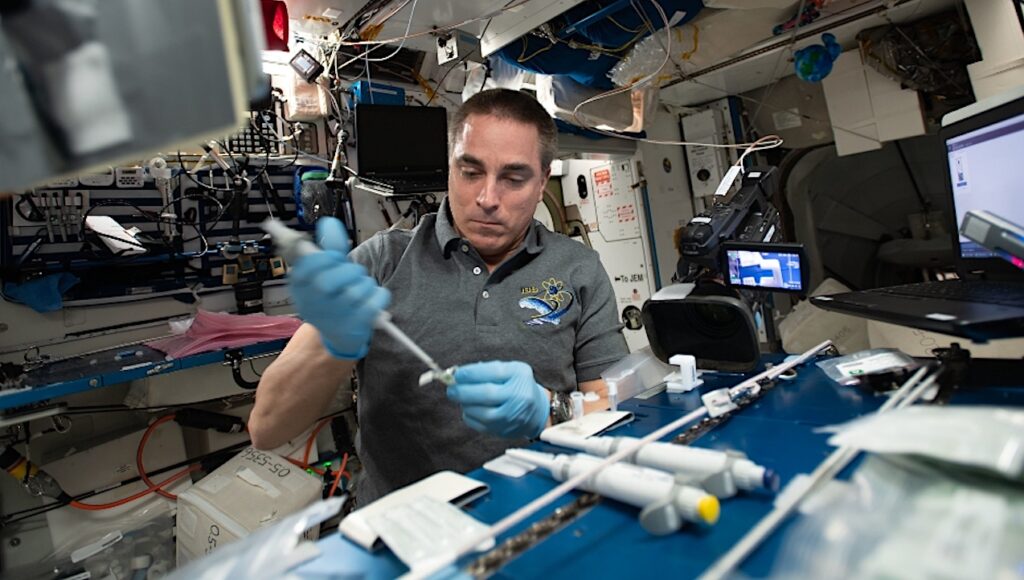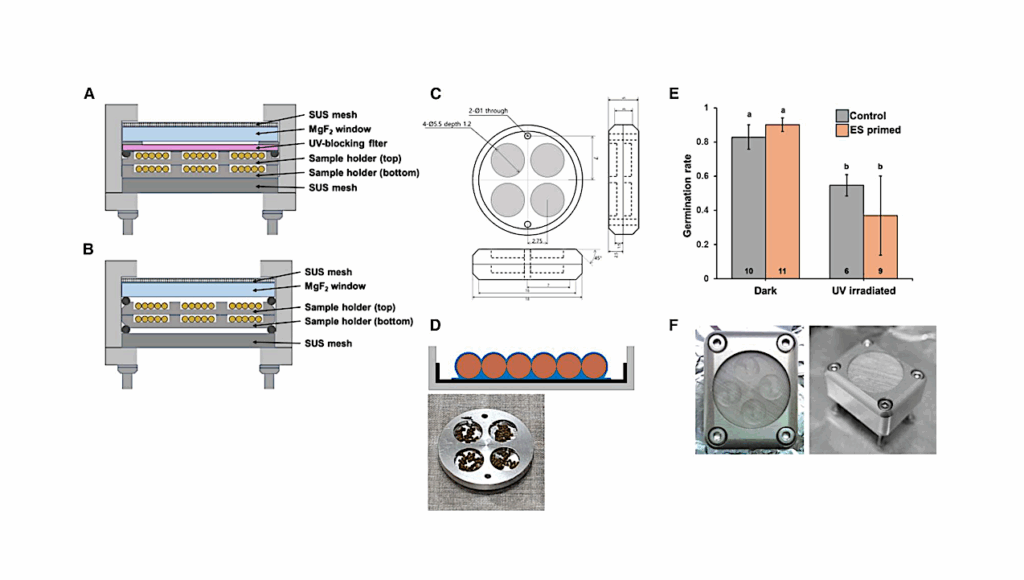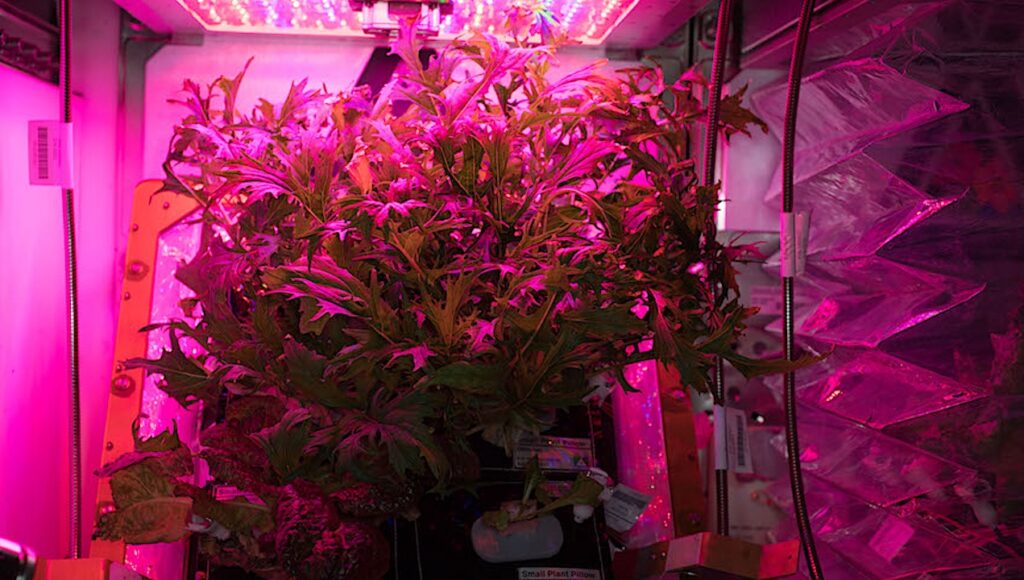NASA Spaceline Current Awareness List #1,076 – 22 November 2023 (Space Life Science Research Results)

Space Life Science
NASA
SPACELINE Current Awareness Lists are distributed via listserv and are available on the NASA Task Book website at https://taskbook.nasaprs.com/Publication/spaceline.cfm. Please send any correspondence to Shawna Byrd, SPACELINE Current Awareness Senior Editor, [email protected].
This week‘s Current Awareness list is being sent out early and is a shorter list due to the Thanksgiving holiday. The next list will be the regular number of article citations and sent out as usual on Friday, December 1.
Papers deriving from NASA support:
- Andrade MR, Azeez TA, Montgomery MM, Caldwell JT, Park H, Kwok AT, Borg AM, Narayanan SA, Willey JS, Delp MD, La Favor JD.Neurovascular dysfunction associated with erectile dysfunction persists after long-term recovery from simulations of weightlessness and deep space irradiation.Faseb j. 2023 Dec;37(12):e23246.PIs: S.A. Narayanan, M.D. Delp, J.S. Willey, J. BakerNote: Hindlimb unloading study.
Journal Impact Factor: 4.8
Funding: “80NSSC19K1322/80NSSC19K0426/80NSSC19K0498 National Aeronautics and Space Administration (NASA).” - Roberto de Barros N, Wang C, Maity S, Peirsman A, Nasiri R, Herland A, Ermis M, Kawakita S, Gregatti Carvalho B, Hosseinzadeh Kouchehbaghi N, Donizetti Herculano R, Tirpáková Z, Mohammad Hossein Dabiri S, Lucas Tanaka J, Falcone N, Choroomi A, Chen R, Huang S, Zisblatt E, Huang Y, Rashad A, Khorsandi D, Gangrade A, Voskanian L, Zhu Y, Li B, Akbari M, Lee J, Remzi Dokmeci M, Kim HJ, Khademhosseini A.Engineered organoids for biomedical applications.Adv Drug Deliv Rev. 2023 Nov 13;203:115142. Review.Note: From the abstract: “In this review, we discuss the latest developments in engineering organoids and using materials engineering, biochemical modifications, and advanced manufacturing technologies to improve organoid culture and replicate vital anatomical structures and functions of human tissues.”
Journal Impact Factor: 16.1
Funding: “The authors acknowledge funding from the National Institutes of Health (HL140951, HL137193, CA257558) and the Terasaki Institute for Biomedical Innovation. This review is also supported by the U.S. NASA MUREP Institutional Research Opportunity (MIRO) (80NSSC19M0200) and NASA MUREP High Volume (80NSSC22M0132). H-J.K. would like to acknowledge the Basic Science Research Program through the National Research Foundation of Korea (NRF), funded by the Ministry of Education (RS-2023-00240729).” - Khaleghzadegan S, Rosen M, Links A, Ahmad A, Kilcullen M, Boss E, Beach MC, Saha S.Validating computer-generated measures of linguistic style matching and accommodation in patient-clinician communication.Patient Educ Couns. 2023 Nov 17;108074.PI: M. RosenJournal Impact Factor: 3.5
Funding: “This study was supported by grants from the National Institute of Mental Health of the National Institutes of Health (1R21MH126714; PI: MC Beach), the U.S. Department of Veterans Affairs Health Services Research & Development Service (PPO 20-325; PI: S Saha), the Eunice Kennedy Shriver National Institute of Child Health and Human Development of the National Institutes of Health (R21HD108565; PI: E Boss), and the National Aeronautics and Space Administration (#NNX17AB55G; PI: MA Rosen).” - Morón-López J, Montenegro-Ayo R, Maya A, Yaparatne S, Hernandez-Molina M, Graf J, Apul O, Garcia-Segura S, Matula EE.Incorporation of nanobubbles in spaceflight food production systems.J Plant Interact. 2023 2023 Oct 24;18(1):2271492. Review.Note: From the abstract: “This paper briefly evaluates the nutritional requirements for exploration astronauts and assesses the current approach for spaceflight produce provision.” This article may be obtained online without charge.
Journal Impact Factor: 3.2
Funding: “The authors are thankful for the financial support provided by NASA EPSCoR Cooperative agreement number: EP-23-03 and Federal Award No: 80NSSC22M0168.” - Gupta P, Elser J, Hooks E, D’Eustachio P, Jaiswal P, Naithani S.Plant reactome knowledgebase: Empowering plant pathway exploration and OMICS data analysis.Nucleic Acids Res. 2023 Nov 20. Online ahead of print.PIs: P. Jaiswal, S. NaithaniNote: This article may be obtained online without charge.
Journal Impact Factor: 14.9
Funding: “S.N. acknowledges funding from the National Aeronautics and Space Administration (NASA), USA [80NSSC22K0891]; P.J. acknowledges funding from NASA [#80NSSC22K0855], National Science Foundation, USA [2029854]; USDA-ARS; in-kind support in the curation and hosting of the web server is provided by the Human Reactome, funded by the NIH NHRGI [U24 HG012198[. Funding for open access charge: National Science Foundation, USA [2029854].”
Other papers of interest:
- Fonte C, Jacob P, Vanet A, Ghislin S, Frippiat JP.Hindlimb unloading, a physiological model of microgravity, modifies the murine bone marrow IgM repertoire in a similar manner as aging but is less strong.Immun Ageing. 2023 Nov 20;20(1):64.Note: Hindlimb unloading study. This article may be obtained online without charge.
- Ge J, Yue Y, Nie H-Y, Liu K-G, Li H, Lin H-G, Zhang T, Yan H-F, Sun H-W, Yang J-W, Zhou J-L, Cui Y.Simulated microgravity altered the gene expression profiles and inhibited the proliferation of kupffer cells in the early phase by downregulating LMO2 and EZH2.Life Sci Space Res. 2023 Nov 17. Online ahead of print.Note: From the abstract: “Microgravity is a primary challenge that need to overcome, when human travel to space. Our study provided evidence that Kupffer cells (KCs) are sensitive to simulated microgravity (SMG), and no similar research report has been found in the literature.”
- Day RM, Rittase WB, Slaven JE, Lee SH, Brehm GV, Bradfield DT, Muir JM, Wise SY, Fatanmi OO, Singh VK.Iron deposition in the bone marrow and spleen of nonhuman primates with acute radiation syndrome.Radiat Res. 2023 Nov 16. Online ahead of print.
- Hurley K, Clow R, Jadhav A, Azzam EI, Wang Y.Mitigation of acute radiation syndrome (ARS) with human umbilical cord blood.Int J Radiat Biol. 2023 Nov 15;1-18. Online ahead of print. Review.Note: From the abstract: “The growing concern over potential unintended nuclear accidents or malicious activities involving nuclear/radiological devices cannot be overstated. Exposure to whole-body doses of radiation can result in acute radiation syndrome (ARS), colloquially known as “radiation sickness,” which can severely damage various organ systems. Long-term health consequences, such as cancer and cardiovascular disease, can develop many years post-exposure. Identifying effective medical countermeasures and devising a strategic medical plan represents an urgent, unmet need. Various clinical studies have investigated the therapeutic use of umbilical cord blood (UCB) for a range of illnesses, including ARS. The objective of this review is to thoroughly discuss ARS and its sub-syndromes, and to highlight recent findings regarding the use of UCB for radiation injury.”
- Johnson BJ, Barcus RA, Olson JD, Lipford ME, Andrews RN, Dugan GO, Tooze JA, Kim J, Deycmar S, Whitlow CT, Cline JM.Total-body irradiation alters white matter volume and microstructural integrity in rhesus macaques.Int J Radiat Oncol Biol Phys. 2023 Nov 14. Online ahead of print.Note: From the abstract: “Long-term survivors of brain irradiation can suffer from irreversible injury and cognitive impairment. T1-weighted and diffusion tensor magnetic resonance imaging are used to evaluate brain volumes and white matter (WM) microstructure in neurodevelopmental and neurodegenerative conditions. The goal of this study was to evaluate the long-term effects of single-dose total-body irradiation (TBI) or TBI with 5% partial-body sparing on brain volumetrics and WM integrity in macaques.”
- Si S, Shang Y, Ma X, Wang M, Xu B, Zong J, Zhang L, Chen X, Song S.[Collagen peptide partially restores immune function in mice under the condition of X-ray irradiation combined with simulated weightlessness].Xi Bao Yu Fen Zi Mian Yi Xue Za Zhi. 2023;39(11):967-72. Chinese.Note: X-ray irradiation and hindlimb unloading study.
- Cai P, Li C, Ding Y, Lu H, Yu X, Cui J, Yu F, Wang H, Wu J, El-Newehy M, Abdulhameed MM, Song L, Mo X, Sun B.Elastic 3D-printed nanofibers composite scaffold for bone tissue engineering.ACS Appl Mater Interfaces. 2023 Nov 16. Online ahead of print.
- Thompson BP, Doherty CJ, Mann LM, Chang JC, Angus SA, Foster GE, Au JS, Dominelli PB.Supramaximal testing to confirm the achievement of V̇O2max in acute hypoxia.Med Sci Sports Exerc. 2023 Nov 14. Online ahead of print.
- Domokos-Szabolcsy É, Alshaal T, Koroknai J, Kovács S, Tóth C, Csilléry G, Jókai Z, Matkovits A, Makleit P, Veres S, Fári MG.Phytochemical evaluation of the fruits and green biomass of determinate-type sweet pepper (Capsicum annuum L. fasciculatum) grown in terrestrial bioregenerative life-support research facilities.J Plant Interact. 2023 Oct 24;18(1):2268118.Note: This article may be obtained online without charge.








